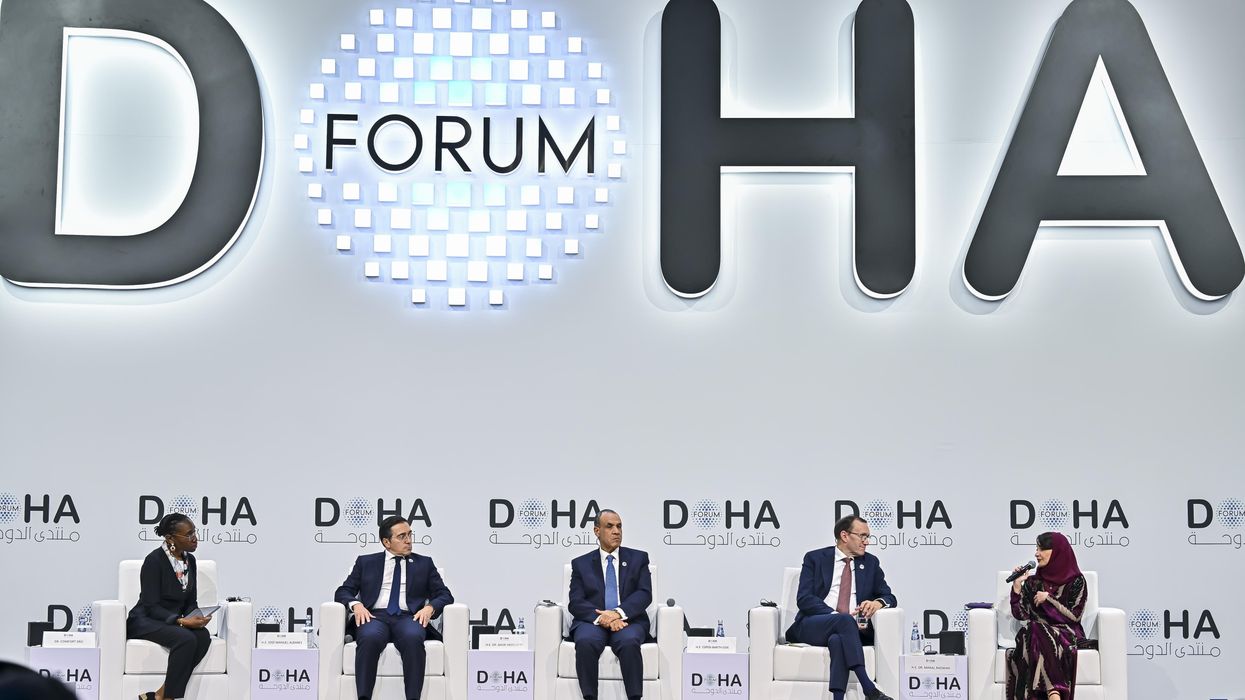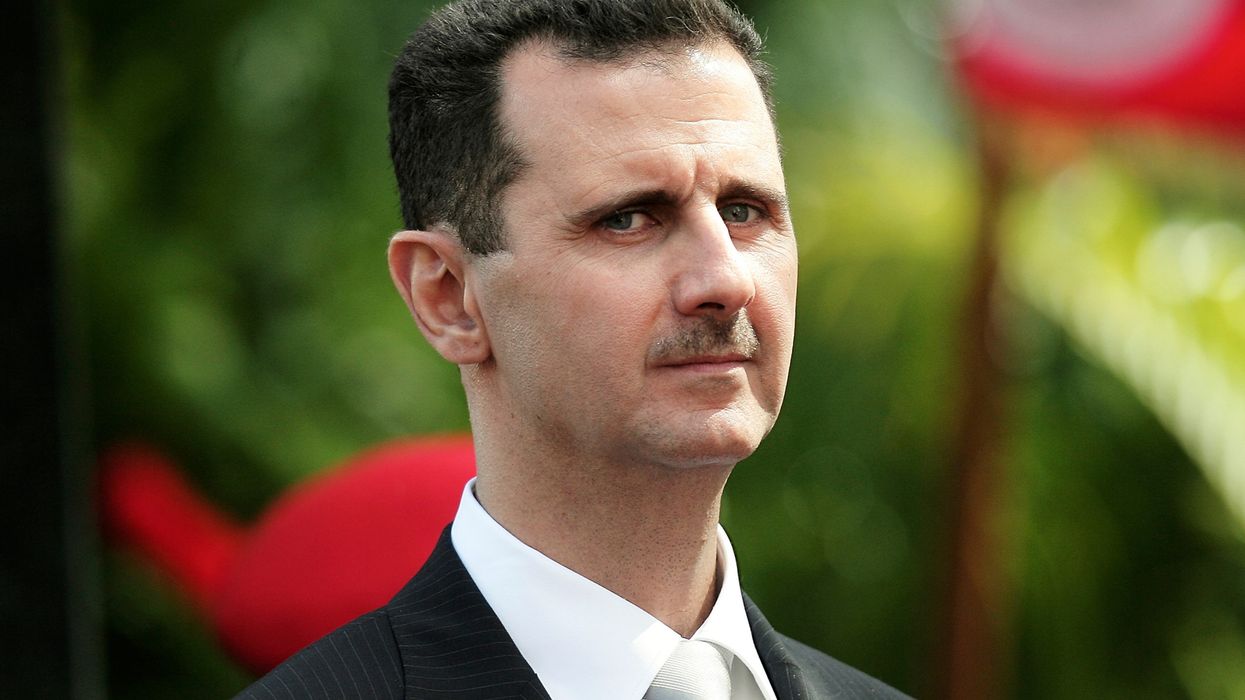Since the beginning of President Donald Trump’s second term, there have been ongoing diplomatic efforts to broker a peace settlement in the three-year-long war between Russia and Ukraine. So far, however, negotiations have failed to bridge the stark divide between the two sides.
Two of the key contentious issues have been post-war security guarantees for Ukraine and the political status of Ukrainian territory claimed or annexed by Russia. Specifically, regarding territorial sovereignty, Ukraine and Russia have rejected the United States' proposal to “freeze” the war along the current line of conflict as a de facto new border. Ukraine has refused to renounce its claims of sovereignty over territories occupied by Russia (including Crimea, which was annexed in 2014). Russia, in turn, has demanded Ukraine’s recognition of Russia’s territorial claim over the entirety of the four Ukrainian regions, which Russia annexed in 2022.
For advocates of a peace settlement, the behaviors of Ukraine and Russia may appear irrational, prolonging the war in the pursuit of costly, even unrealistic objectives. Ukraine, especially amid a possible reduction in U.S. support, appears unlikely to successfully repulse Russian forces from its sovereign territory. Russia, in turn, has achieved only incremental, costly successes in its recent military advances. Despite losing some ground, Ukrainian forces still control substantial territory in the four regions annexed by Russia.
As Harvard professor Graham Allison already observed during the early stages of the war, if future military operations are likely to alter the final territorial boundaries only marginally, the warring parties may be better off settling the war at present. So why don’t they?
Applying the prospect theory may help better understand the psychology of Russian and Ukrainian leaders. The prospect theory, derived from behavioral economics and psychology, explains why policymakers may be inclined (or disinclined) to certain policy decisions. The theory assumes people, including policymakers, assess their circumstances relative to a psychological reference point, determining whether they are operating in a domain of "gains" or "losses." If people perceive the circumstance as below the reference point, they are less likely to accept the status quo. Instead, people are more prone to engage in risk-seeking behaviors to improve their present circumstances.
Negotiating a war settlement faces a challenge when belligerents perceive themselves to be in the domain of “losses.” Leaders are averse to settlement terms that would consolidate their present losses, including territorial losses. For Ukraine, the territorial reference point is the restoration of its sovereign border before Russia’s annexation of Crimea. Though Ukraine has supported a temporary ceasefire, it has opposed a formal settlement that entails international recognition of a newly drawn border between Ukraine and Russia. Not only are Ukrainian leaders averse to permanent losses of their sovereign territory, but they also face domestic political pressure, as some polling shows that a majority of the Ukrainian public is opposed to territorial concessions as a condition for peace.
Though Russia may appear to have achieved significant territorial gains (occupying nearly 20% of Ukraine’s territory), the Russian government perceives its failure to prevent Ukraine’s geopolitical alignment with the West (even without formal NATO membership) as a “geopolitical loss.” While continuing to demand Ukraine’s “neutrality” and “disarmament,” Russia appears most determined to attain international (and Ukraine’s) recognition of its annexation of Crimea and Ukraine’s four southeastern provinces as compensation for Russia’s losses. The territorial expansion would also serve as a display of a public victory in justifying the “special military operation” that was launched under the pretext of protecting the self-determination of the Russian-speaking populace and regions in Ukraine.
For the Trump administration, impatient for a quick end to the war, the challenge lies in convincing Ukraine and Russia to accept a territorial border that falls below their respective reference points. Ukraine would not retake Russian-occupied territories, while Russia would not achieve complete control over its claimed annexed territories. A commonly proposed strategy is for the United States to apply coercive pressure on both parties. The U.S. suspension of support for Ukraine, increased sanctions on Russia could shift the balance on the battlefields, increasing tactical dilemmas for each side to decide between accepting the current conflict line or risking greater territorial losses and rising military/economic costs.
The drawback of the coercive strategy, however, is that belligerent countries may choose to withstand U.S. pressures, rather than to abandon their territorial demands. To increase the likelihood of a war settlement, the Trump administration should also engage in a parallel strategy, allowing ambiguity regarding the future political status of the disputed territories.
While establishing the military demarcation line and the surrounding demilitarized buffer zone (which may be monitored by international, even European peacekeepers), the settlement should avoid requiring either Russia or Ukraine to formally renounce their territorial claims. Instead, political governance over the disputed territories (four regions plus Crimea) should be deferred to future post-war negotiations. Such ambiguity would allow Russia and Ukraine to provisionally accept the military demarcation line, yet continue to advocate, domestically and internationally, for their territorial claims.
The ambiguity over territorial control can pose a significant challenge to the maintenance of a war settlement. Ukraine and Russia are likely to remain committed to future territorial “liberation” — prolonged diplomatic impasse could incentivize hardline factions in both countries to pursue coercive, even military means to achieve their objectives. However, it is debatable whether requiring formal territorial concessions, even if successful, would then significantly increase the prospects of a durable peace. As Germany did after the Versailles Treaty, the USSR after the Brest-Litovsk Treaty, a country forced to formally cede territory to an adversary may still seek to revise or overturn the settlement in the future.
The ambiguity over territorial status, while frustrating for those who seek a conclusive settlement outcome, offers two potential hopes for sustaining a peace settlement. First, it provides hope for the country that the current losses can be recovered with the changes in future geopolitical circumstances. Ukraine may retain hope that future political change within Russia would increase prospects for territorial recovery, similar to the Baltic states’ eventual achievement of independence after the USSR’s dissolution.
Second, even if the territorial status remains unresolved, there is an alternative hope that the countries’ reference point may shift over time. The domestic politics may eventually come to accept the status quo as the new reference point. As an example, shortly after the Korean War armistice, the South Korean government initially advocated for a militant “pukchin”(advance northward) reunification strategy. Today, though affirming the goal of reunification, contemporary South Korean politics display greater restraints and caution toward inter-Korean relations.
Should Ukraine’s pro-Western alignment, Russia’s occupation of Ukraine’s territory, become entrenched, future Ukrainian and Russian governments may continue to perceive each other as adversaries but display greater restraints in destabilizing the new de facto status quo.
Critics may question whether Ukraine or Russia could be persuaded to accept a settlement (assuming other contentious issues are resolved) with an open-ended question on their core territorial claims. The two countries, especially Russia, are unlikely to accept such terms willingly, necessitating increased pressure from the U.S. and the West.
Nevertheless, the prospect of a war settlement is more likely with the inclusion, rather than the exclusion, of territorial ambiguity. This approach accommodates the two countries’ aversion to conclusive acceptance of their present losses. Such a settlement framework may appear manipulative and be accused of postponing the key conflict issue to future uncertainty.
However, after three years of Russia-Ukraine War, the United States and the international community face a difficult strategic choice: to continue the risks and costs of a prolonged war for a more conclusive territorial outcome or convince the two countries to accept the risks of a peace with an inconclusive territorial settlement.
- Imposing 500% tariffs on nations that trade with Russia will backfire ›
- A window has opened to end the war in Ukraine ›
















